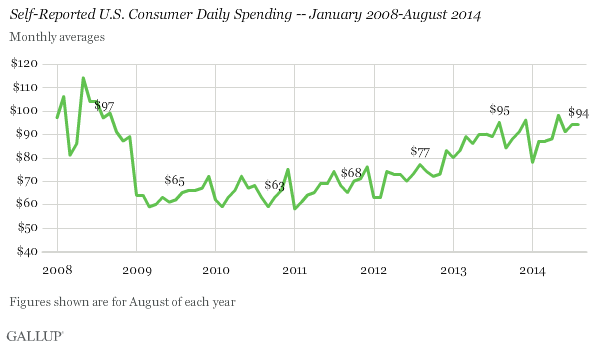Here are 10 of my favourite recent psychology studies about happiness.
By Dr Jeremy Dean
Hope you enjoy them!
(You can click the links for longer descriptions of the studies.)
1. Happiness activates the whole body
Unlike thoughts, the emotions don’t live entirely in the mind, they are also associated with bodily sensations.
Thanks to a new study, for the first time we now have a map of the links between emotions and bodily sensations.
Finnish researchers induced different emotions in 701 participants and then got them to colour in a body map of where they felt increasing or decreasing activity.
Yellow indicates the highest level of activity, followed by red. Black is neutral, while blue and light blue indicate lowered and very low activity respectively.
It’s fascinating that happiness is the one emotion that fills the whole body with activity, including the legs, perhaps indicating that happy people feel ready to spring into action, or maybe do a jig.
2. Happiness changes our genetic code
The
right kind of happiness doesn’t just feel great, it also benefits the body, right down to its instructional code.
A recent study examined the pattern of gene expression within the cells responsible for fighting off infectious diseases and defending the body against foreign materials.
Amongst people experiencing higher levels of ‘doing good’ happiness, there was a stronger expression of antibody and antiviral genes.
While doing good and feeling good both make us feel happy, it’s doing good that benefits us at the genetic level.
3. People are happier when they do the right thing
What has happened to people’s happiness all around the world as they’ve faced the economic crisis?
How have they coped with job losses, less money coming in, the sense of despair and lack of control over a nightmare that seems to have no end?
One answer is: some have pulled together.
Data from 255 metropolitan areas across the US found that communities that pull together — essentially doing nice little things for each other like volunteering and helping a neighbour out —
are happier.
Social capital has a protective effect: people are happier when they do the right thing.
4. Act like an extrovert — even if you are an introvert
Acting like an extrovert — even if you are an introvert — makes people all around the world feel happier, recent research suggests.
The findings come from surveys of hundreds of people in the US, Venezuela, the Philippines, China and Japan.
Across the board, people reported that they felt more positive emotions in daily situations where they either acted or felt more extroverted.
Participants in the study were told to act in an outgoing way for 10 minutes and then report how it made them feel.
5. Happiness is contagious online
Emotions expressed online — both positive and negative — are contagious, a new study concludes.
One of the largest ever
studies of Facebook examined the emotional content of one billion posts over two years.
Software was used to analyse the emotional content of each post.
It turned out that positive emotions spread more strongly than the negative, with positive messages being more strongly contagious then negative.
6. Ageing changes what makes you happy
A recent study asked over 200 people between the ages of 19 and 79 about happy experiences they’d had that were both ordinary and extraordinary.
Across all the age-groups in the study, people found pleasure in all sorts of experiences; both ordinary and extraordinary.
But it was older people who managed to extract more pleasure from relatively ordinary experiences.
They got more pleasure out of spending time with their family, from the look on someone’s face or a walk in the park.
Younger people, meanwhile, defined themselves more by extraordinary experiences.
7. Why materialistic people are less happy
The reason that materialistic people are less happy is that a focus on what you want — and therefore don’t currently have — makes it more difficult to appreciate what you already have.
A recent study found that materialists also feel less gratitude which, in turn, is associated with lower levels of life satisfaction.
The study quotes the words of Greek philosopher Epicurus, who said:
“Do not spoil what you have by desiring what you have not; remember that what you now have was once among the things you only hoped for.”
By law, all credit cards should have this quote across the front in fluorescent pink.
8. The power of social connections
Relationships have stronger associations with happiness than academic achievement, according to
a recent study.
Whilst strong social relationships in childhood and adolescence were associated with happier adults, the associations with academic achievement were much lower.
It seems that all the education in the world won’t necessarily teach you much about what it means to be happy, in either the emotional or philosophical sense.
9. Goals that lead to happiness
New research suggests that certain concrete goals for happiness work better than abstract goals.
The study found that acts performed in the service of a concrete goal (making someone smile) made the givers themselves feel happier than an abstract goal (making someone happy).
By thinking in concrete ways about our goals for happiness, we can minimise the gap between our expectations and what is actually possible.
10. Unexpected pleasure from mundane moments
In one study, 135 students were asked to create a time capsule at the start of the summer which included:
- a recent conversation,
- the last social event they’d attended,
- an extract from a paper they’d written,
- and three favourite songs.
At the time, they also predicted how they’d feel about these items when they opened the capsule three months later.
Despite being relatively mundane, the students significantly under-estimated how surprised and curious they would be when they opened it.
The study is a reminder of how we tend to undervalue the happiness we can get from everyday events.
So, why not make a little time capsule today?



